Always leave reasons to return – that’s the advice from travel writer Lindsay Narey, whose week-long trip to Montenegro involved white knuckle road trips, impromptu history lessons, glasses of pomegranate wine and finding different spots at which to gaze at the eye-watering vistas.
We catch up with her to find out about her itinerary and recommendations when visiting this Balkan jewel, which she believes has something for the history hunter, the adrenaline junkie, the sun seeker and everyone else in between.
More than meets the eye in Montenegro
When I reflect on our week in Montenegro, it feels like several holidays rolled into one. One day, we were plunging into turquoise cave waters from the deck of a speedboat, on another, we conquered crumbling medieval steps in ill-advised shoes. Later, we strolled through cobbled streets searching for chilled local wine and then went heron-spotting on a lily-strewn lake.
Despite such variety, I boarded the plane home feeling Montenegro had plenty more to offer. Such diversity of stuff to do is more surprising when you consider that at only 13,800 square kilometres, the Balkan country is roughly 18 times smaller than the UK.

Where is Montenegro?
Montenegro is in south-eastern Europe, one of the countries created from the former Yugoslavia. It borders Croatia, Serbia, Albania, Bosnia and Herzegovina, North Macedonia and Kosovo, and is a roughly three-hour flight from the UK.
You can fly into Montenegro directly (Tivat or Podgorica) or into Dubrovnik and cross the Croatian/Montenegrin border on a short, but often busy, journey. easyJet flies directly to Montenegro Tivat from London Luton.
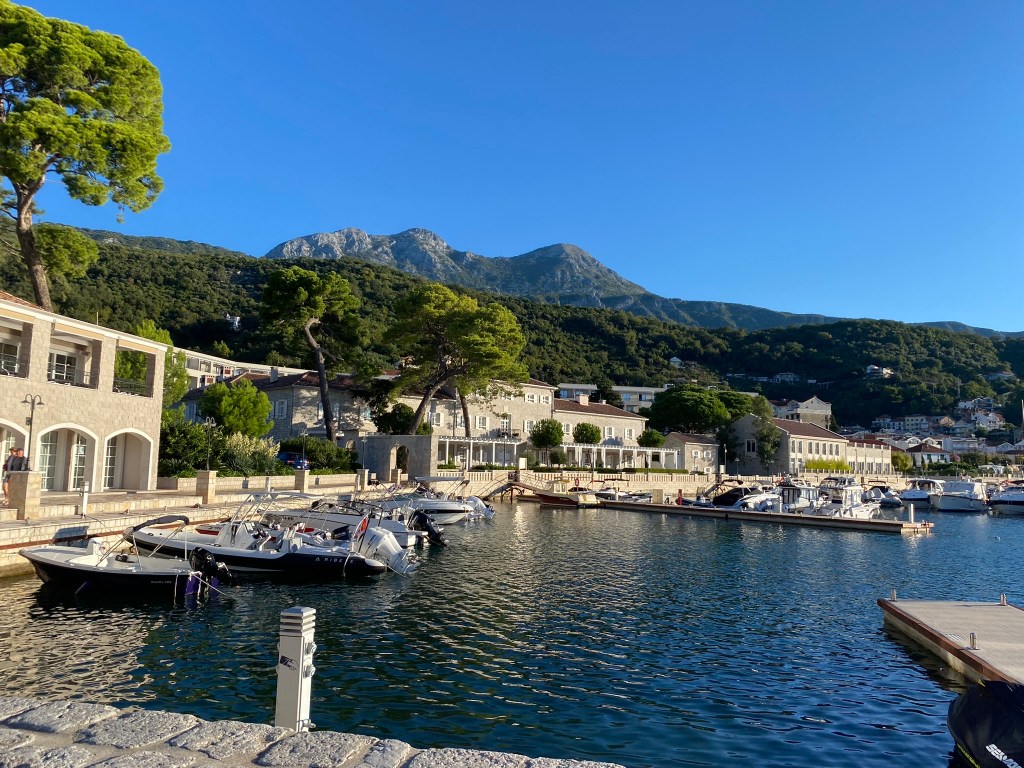
Getting your bearings
With fortified towns, monasteries, mountains, lakes, gorges, wild-water canyons and a plethora of beaches, Montenegro has something to please everyone – whether you like to explore or lounge.
The Bay of Kotor, known locally as Boka, is a Norwegian fjord-like 28km mountain-fringed expanse and the jewel in Montenegro’s crown. You’ll see its azure waters on the cover of any Montenegro guide book and rightfully so. It’s eye-wateringly stunning. Ogle it from a hotel balcony or ancient city walls, with sunglasses on or off or through the bottom of your wine glass. It looks perfect in any light, from any angle.

A base on the bay: Herceg Novi
We stayed on the outskirts of Herceg Novi, a small town at the mouth of the bay as it sweeps in from the Adriatic Sea. As well as being handily close to the Croatian border if you’ve flown into Dubrovnik as we did, it’s got a fortress, a marbled square, churches, interesting architecture, a sandy-pebbly beach, a harbour and a clutch of decent restaurants and bars. Its wide promenade is also a spectacular running route, ideal for admiring the bay of Kotor at pace.
The only blight on the otherwise stunning scenery was the Hotel Plaza, a sprawling abandoned complex on the bay-side which might have been the place to be in 1982, but now resembles the aftermath of a zombie apocalypse.
With its rusting spiral fire escape, weed-infested balconies and drained swimming pool, it made for bleak but strangely fascinating viewing each time we passed. There are plans to demolish part of the building and redevelop it, to create a five-star hotel in this prime location.
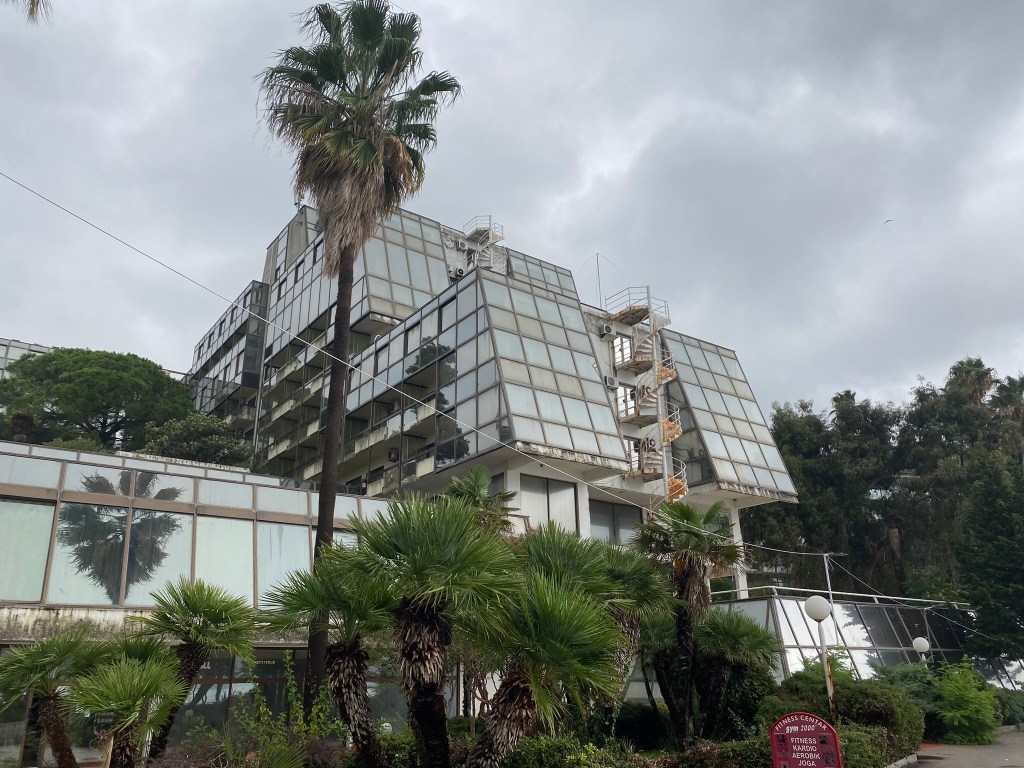
Thankfully, Montenegro’s plentiful natural beauty more than compensates for any manmade ugliness. Opposite Herceg Novi is the Lustica Peninsula, a rustic stretch peppered with olive groves, secret beaches and low-key villages.
From Herceg’s harbour, a water taxi, kayak or paddleboard, bookable from the port, will get you there considerably quicker than navigating the hairpin roads around the bay. We reached it via James Bond-esque speedboat, calling first at the Blue Cave or Plava Spilja, a luminous-watered grotto burrowed into the wild cliffs, ideal for swimming and snorkelling.
Though similar to lots of excursions you might encounter on holiday, this three-hour one (for around £35 each) also took in a whistle stop military history lesson, as the boat slowed to slither through an eerie graffitied concrete submarine tunnel and cruise by the imposing Mamula Island, a former WW2 base with a dark history, now converted into a luxury hotel.
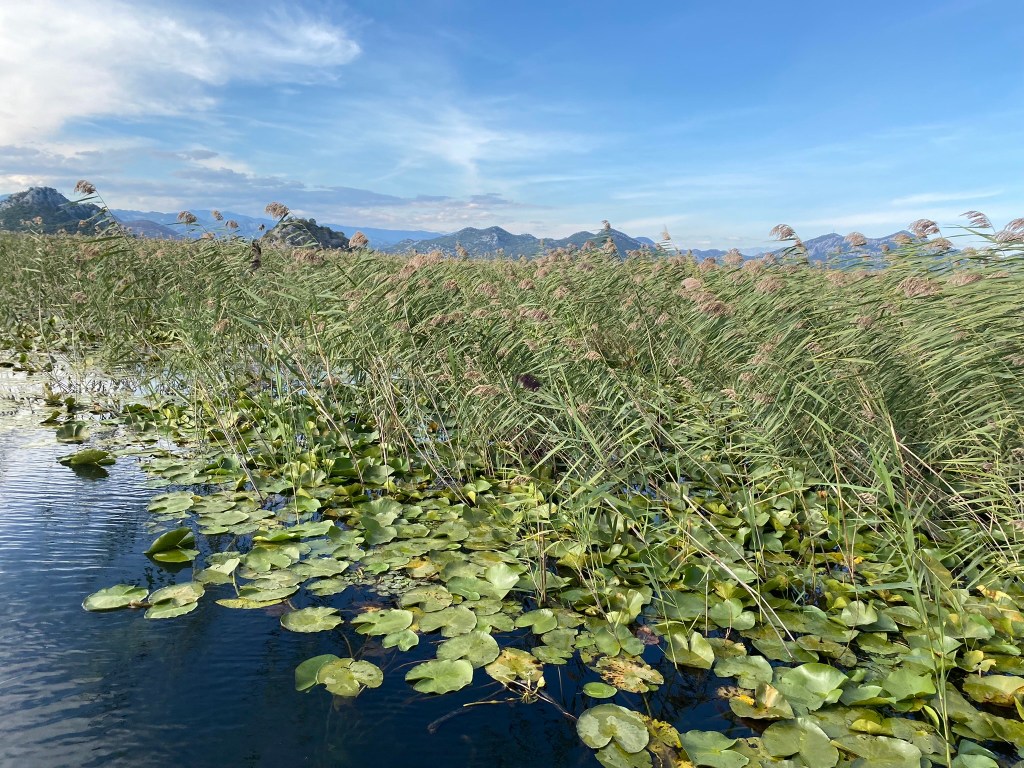
Out and about
With a pleasing temperature hovering around 23 degrees when we visited in September, a week of lounging in easy-on-the-eye surroundings was appealing, but in Montenegro you’ll feel cheated if you don’t branch out and explore.
Buses run regularly and link lots of the top spots around the bay, but for freedom and flexibility, hire a car. Brace yourself, however, for the local roads and driving style, which demands a degree of nerve.
Although arguably one of the world’s most breath-taking drives, you might take sharp inhalations of breath for other reasons on the narrow road hugging the edge of the bay of Kotor. Overtaking on bends, disregarding speed limits and using phones and chain-smoking at the wheel seemed standard.
On a practical note, choose your wheels wisely if you intend to take some of the near vertical roads to popular places such as the Ostrog Monastery. While our tiny Toyota made parking in some of the tight streets of local towns simple, it also generated several white-knuckle moments when trying to scale some more challenging routes. With hindsight, I’d have picked something with more capability than a travel hairdryer.
The single-track road around the bay is understandably super-popular and the most direct way to reach many main towns and attractions, so traffic jams are inevitable. Though initially you’ll think being stuck with an outlook of endless sky, snow-capped mountains and glittering cerulean water is no hardship, after a few days you may appreciate a shortcut.
The car ferry at the Verige Straits, the narrowest part of the bay, helps shave a good 30 minutes or more from your journey, when travelling from one side to the other. You can take the regular 10-minute crossing between Kamenari and Lepetane for a few euros. Don’t dither here, as it’s the definition of running a tight ship, setting off seconds after the last car is onboard.
English is widely spoken in main tourist resorts but not in the more rural areas.

A tour of the Bay of Kotor
A sliver of a village bursting with pristinely preserved Venetian-era palaces, squares and churches, Perast is so mind-blowingly beautiful it’s like stepping into a painting. You can stroll along its 1.5km main street in no time, but slow down and linger over a pomegranate wine and slice of Krempita cream pie in one of the shoreline cafes and drink in your environment.
The way the light hits the water in this part of the bay is incredible and with the mountainous backdrop and twin islet churches of Our Lady of the Rocks and St George in the foreground, the whole scene appears almost unreal.
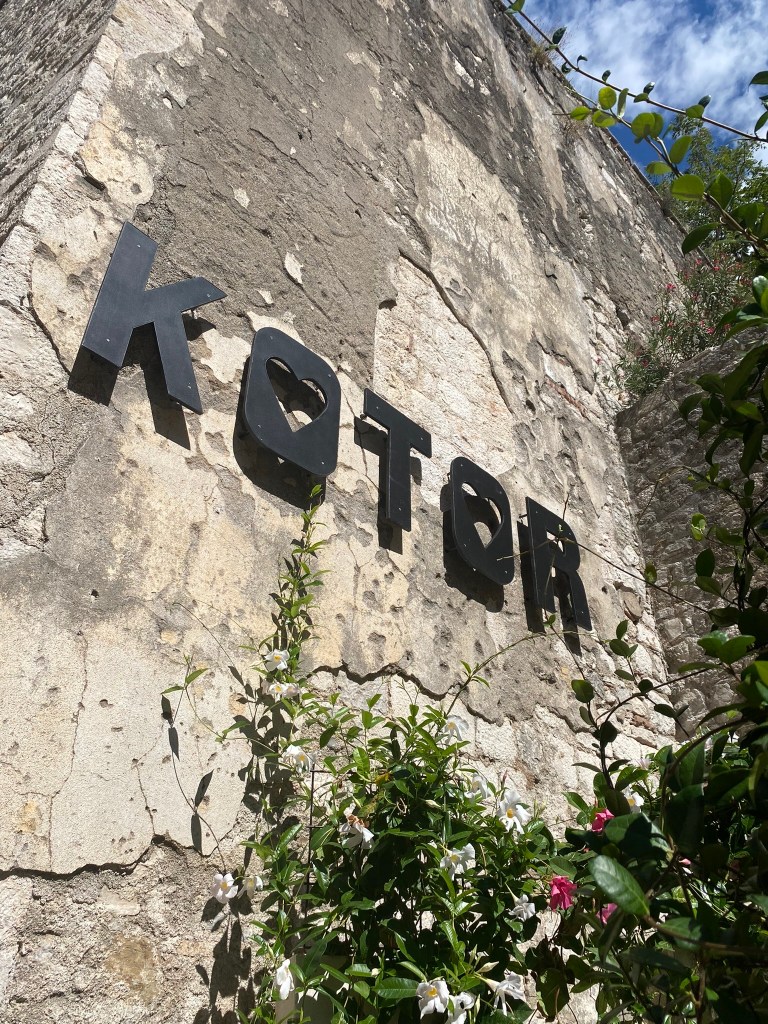
After peaceful Perast, the Bay’s namesake, Kotor, has a totally different feel. A UNESCO heritage site dating back to the 12th century, it’s a charming tangle of buzzing narrow medieval streets designed for getting lost.
Enjoy long lunches in stone squares, gorge on pistachio gelato and burn it all off with a 1355-step hike to the top of the San Giovanni fortress (€8 entrance fee) for yet more marvelling at the Bay of Kotor.

Swap flip-flops for sturdy shoes, as the weathered steps are slippery, uneven and without railings in places, but the view from the top is priceless. Fans of fur-covered creatures will find Kotor memorable for another reason: cats. Find them sunbathing on ancient walls, snoozing in ornate doorways, hustling for snacks from pavement cafe tables and adorning souvenir fridge magnets and postcards. Kotor even has a museum dedicated to the much-loved feline. ‘Cat-or’ might be a more appropriate name for the place!
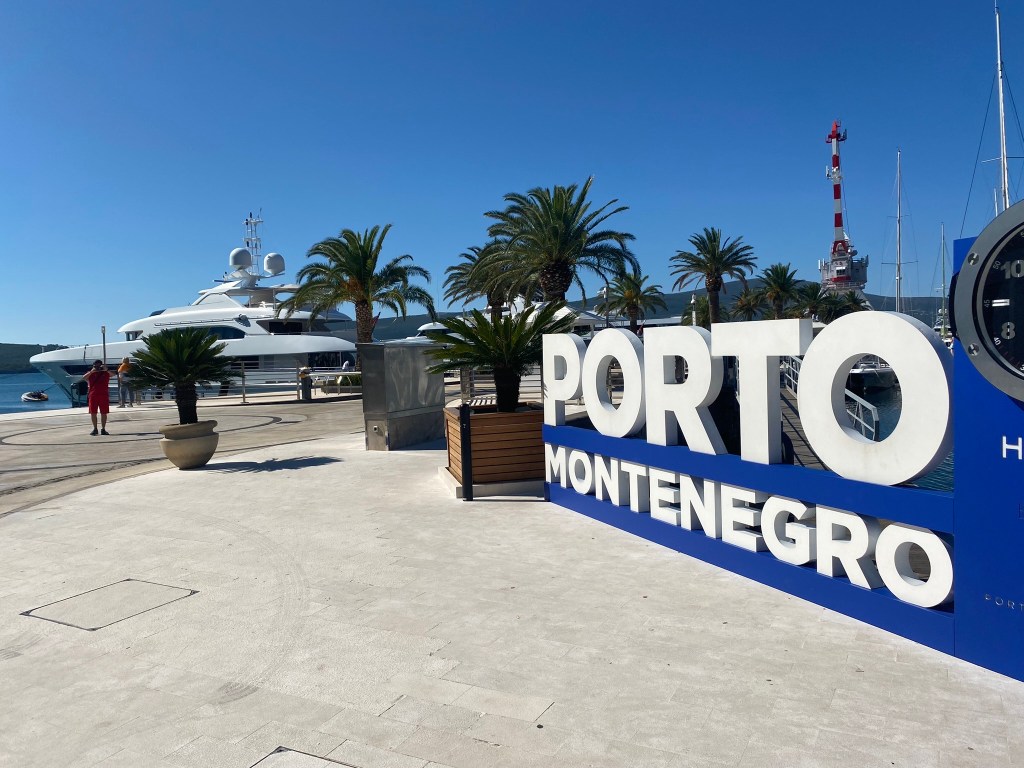
Travel from the 12th century to uber-modern times by calling at Porto Montenegro, a yacht club, marina and designer shopping haven for the mega-wealthy. It’s worth a quick stop if only to ponder which of the gleaming superyachts you’d pick to sail across the Boka if money were no object, and you’ve guessed it, more staring at the bay from a different angle.
Sand-seeking on the Adriatic coast
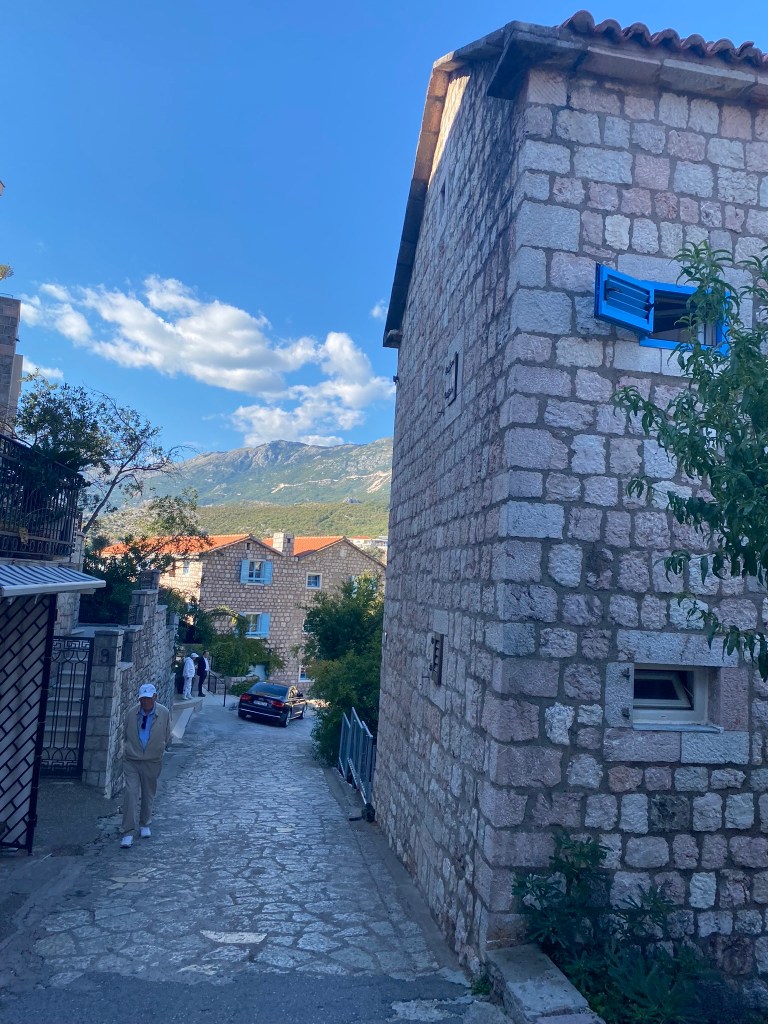
If you’ve come to Montenegro to soak up its many days of sunshine, you’ll find primarily small pebbly beaches, some framed with unsightly concrete blocks, along the bay. For sun lounging, the Adriatic coast is a better bet. Part of the joy of a road trip with no particular agenda is stopping anywhere that catches your eye and Montenegro’s coast is ideal for that.
Budva commands attention as one of the largest and busiest destinations along this stretch, and it’s something of a contradiction. It’s known as the ‘Montenegrin Miami’ because of its thriving nightlife – much of it based around a cramped, tacky strip of beachfront bars serving day-glo cocktails and blasting terrible Europop.
In contrast, the old town, with its citadel and city walls overlooking a sea of red rooftops and labyrinthine streets, rivalled Kotor in the beauty stakes. We found our place in the heart of the old town at Casper Bar, a pine-shaded coffee roastery and winery which later promised more discerning music choices from a live DJ.
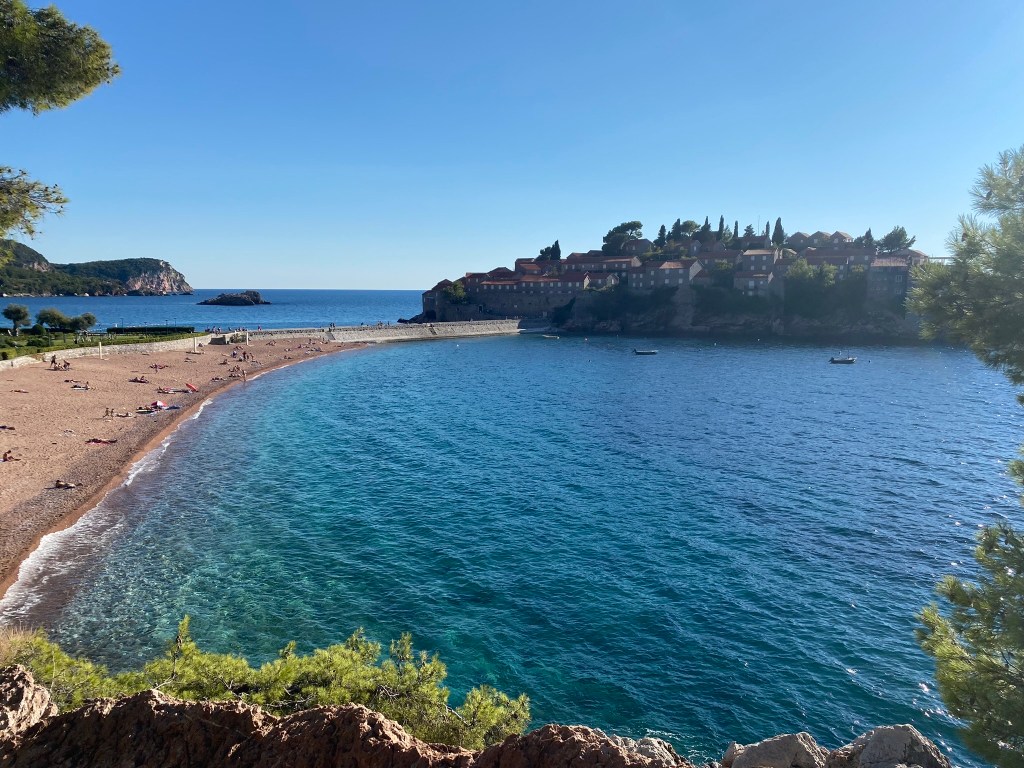
Budva’s beach life was better experienced from the nearby tranquil Sveti (Saint) Nikola island, accessible via a quick boat ride for around €5.
Another Sveti with a namesake island is a short drive, or 20km coastal hike for the energetic, along from Budva. The 15th-century walled island of Sveti Stefan was originally built to defend against the Turks and boasts terracotta rooftops and a stone walkway connecting it to the mainland.
Unless you have the big budget to stay within its walls, it’ll remain a striking but mysterious place – another settlement claimed as a high-end resort. You can, however, peer at it all day from the pinkish-hued beaches opposite. Beware, though, as one side belongs to the resort, and sunbed prices reflect its luxury standards.
Rather than driving to Sveti Stefan directly, we parked in the quiet fishing village of Pržno, and after a pitstop on its compact sandy beach, walked a cooling woodland path, emerging first near Miločer beach. Immaculate, and another stretch of sand with an entrance fee if you want to lounge there, but perhaps no surprise given it’s overlooked by and belongs to the elegant Villa Miločer, former royal residence turned hotel.
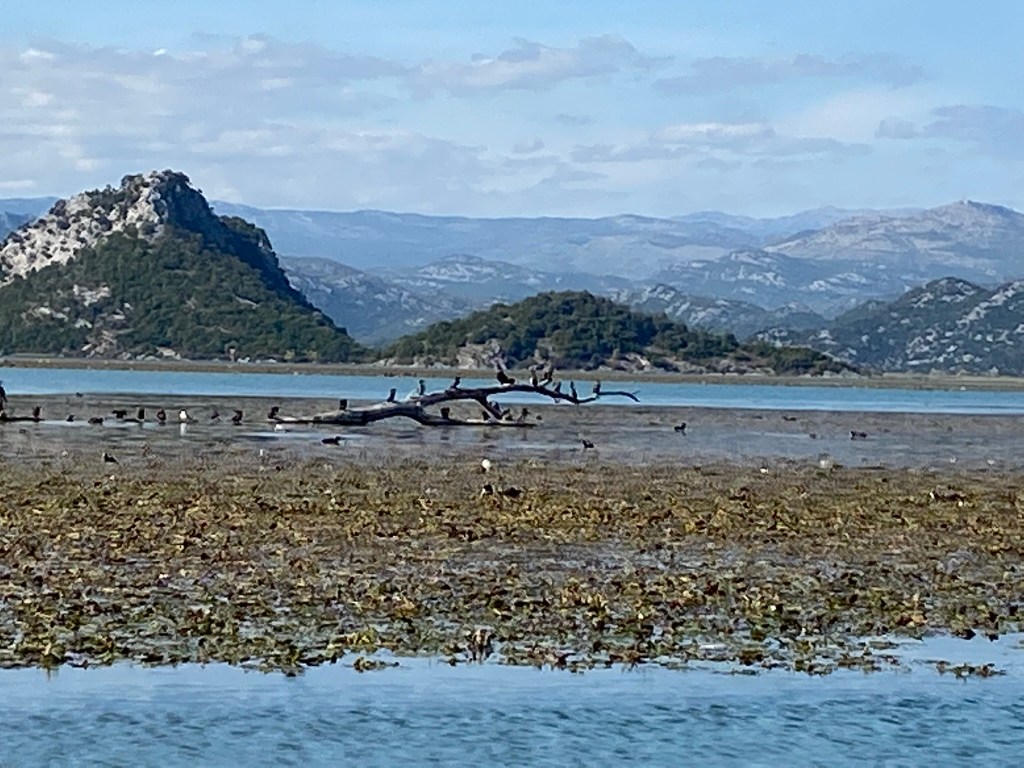
Lake life
Montenegro’s rich geography and climate appeal to many and on Lake Skadar, this includes the 270+ migratory bird species who visit regularly. The dolphin-shaped, lily-carpeted lake is southern Europe’s largest and straddles Montenegro and neighbouring Albania.
From the waterside village of Virpazar, you can pick up countless tours on traditional wooden boats or hire kayaks and make your own way. To boost your appreciation of the local flora and fauna, opt for a skippered, guided tour. Prices vary depending on how many jump onboard and how long you fancy being out on the water. We went for a two-hour private tour for roughly £80.
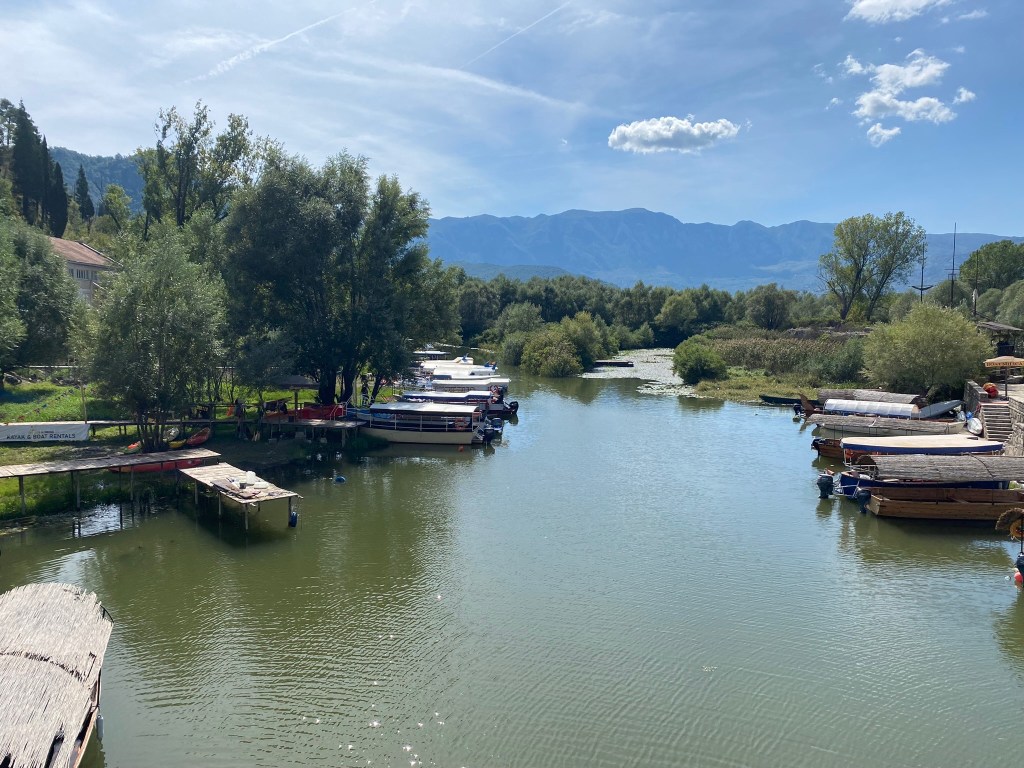
We came back enlightened on Dalmatian pelicans, pygmy cormorants and grey herons, and with comprehensive knowledge of the eel, carp and bleak population lurking beneath the surface. Skadar is so vast that you’ll need to book at least a couple of hours to appreciate all it offers.
Is Montenegro a cheap place to holiday?
I wouldn’t describe as a cheap place but certainly better value than Italy, Spain, Greece for example. An average two-course dinner in mid-range restaurant cost €40-60 for two. For spending money, I estimate €80 per day. It’s worth keeping a bit of cash as some smaller places didn’t take cards when we were there.

Where to stay in Montenegro
We stayed at the immaculate Lazure Hotel and Marina, formed of a restored 18th century Venetian lazaret building and equally tasteful modern block. We paid roughly £2,000 for two people for a week for a B&B superior room with balcony and sea view. My tip: go for a seaview to avoid serious regret if you end up facing the bypass! The price included a sumptuous buffet breakfast and return
It’s worth noting that the hotel is in a peaceful area about a 20-30 minute walk into Herceg Novi. The walk is flat and with bay view all the way, but a fair trek if doing it daily or you have any mobility issues. The hotel also didn’t have an outdoor pool, but does have a lovely indoor one, plus its own pebbly beach for bay swimming.
What’s the food like in Montenegro?
I remember Montenegro for its natural beauty rather than its cuisine. Food was generally quite simple and tasty, but menus could be repetitive, especially in the more popular resorts.
Restaurants are known locally as ‘konobas’ and menus varied according to where in the country we were . By the water, there was big influence from neighbouring countries, with with pizza, pasta, salads, grilled fish and chicken stuffed with Parma ham popping up frequently. There was a Turkish/Greek influence too, with sweet baklava and other dishes.
Local Njeguši prosciutto was a welcome addition to lunchtime cheese, meat and olive platters. We didn’t visit the mountains in the north but food there is apparently more rustic. Think meat and potatoes.
I recommend the burak for breakfast, available from local bakeries or your hotel buffet. It’s a simple savoury cheese/mincemeat pastry in a swirl shape.
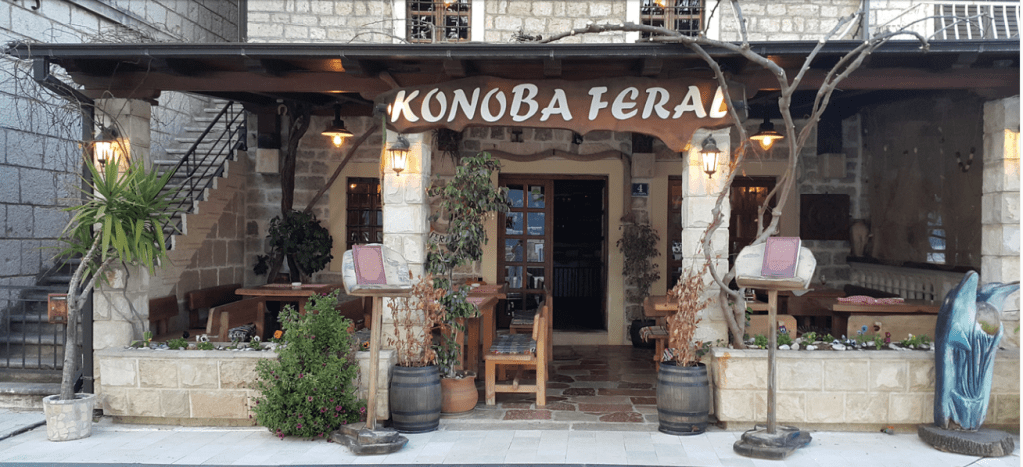
In Herceg Novi, we particularly liked Konoba Feral – a homely tavern with a leafy terrace, a stone’s throw from the water. It’s the place to go for generous servings of fresh pasta and seafood. Try the squid ink black risotto washed down with a Montenegrin wine.
Almost sitting in the water on a tight bend not far out of Herceg Novi, Adriatica served traditional local fish stew and hearty carb loaded dishes to sate hungers generated from endless adventuring. What was most memorable for me was the location, set in a stunning olive grove,with shaded terrace. Unfortunately, we timed our visit with a sudden downpour so had to eat in!
Is Montenegro worth a visit?
In a word, definitely. We crammed plenty into seven days in Montenegro but left lots undiscovered. White-water rafting in the Tara Canyon, crossing to Bosnia and Herzegovina to see Mostar’s famed Stari Most bridge and hiring a car with enough oomph to ascend the mighty mountains for even more impossible vistas are still high on my list.
Always leave reasons to return.
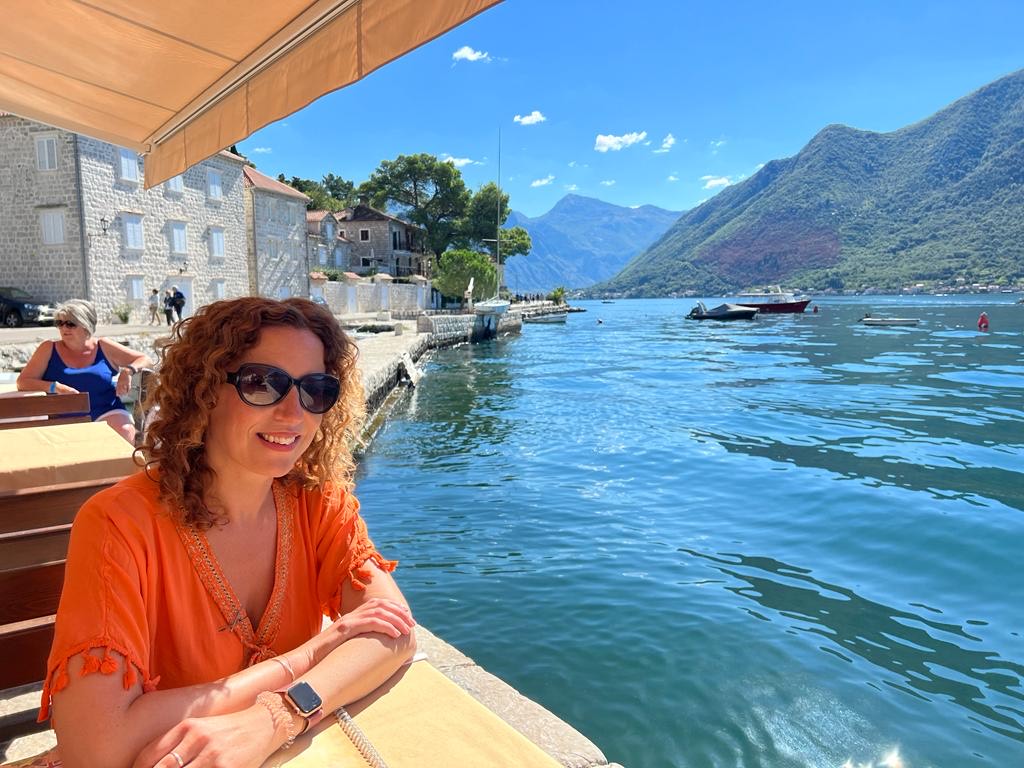

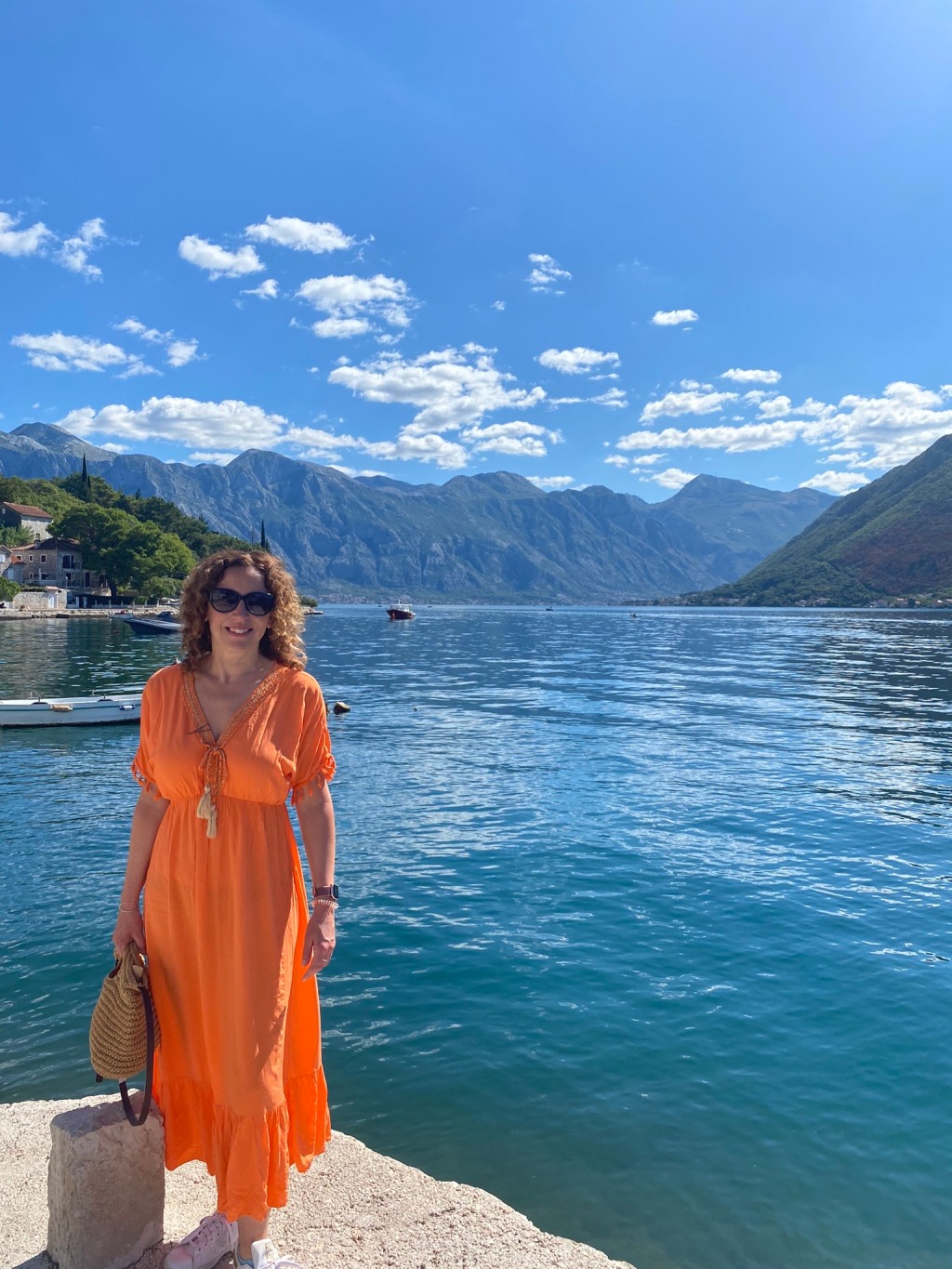



Leave a comment